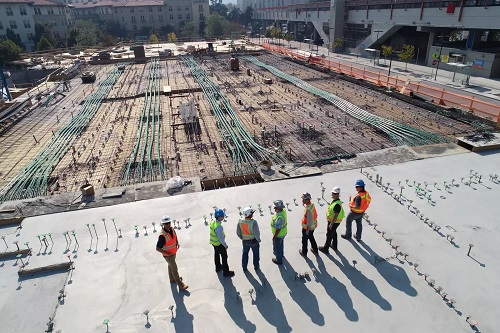 Sunday, September 29, 2024
Sunday, September 29, 2024  Sunday, September 29, 2024
Sunday, September 29, 2024 
A growing number of consumer companies have developed “carbon labels” that disclose their products’ carbon footprints. Such labels should allow buyers to make more informed choices and compare different products’ impacts on climate change. But what if a government – a much larger consumer than individuals like you and me – wants similarly to evaluate the carbon footprints of construction materials they buy?
To translate their green commitments into meaningful action, governments need better data on the climate impacts of what they procure. And because of their significant purchasing power, this data and decisions guided by it can impact even more. So figuring out how to comprehensively and comparably measure the carbon footprints of building materials is essential, requiring collaboration and coordination to get it right. Thankfully there is new international momentum to make this happen.
At the Clean Energy Ministerial in Pittsburgh this September, the Industrial Deep Decarbonization Initiative (IDDI) announced a new Green Public Procurement Pledge. Most immediately, it asks governments to start requiring the monitoring and disclosure of “embodied carbon emissions” – all the GHG emissions associated with building construction – of steel, cement and concrete used in public construction projects by 2025. These common building materials are very carbon-intensive, contributing around 50% of global industrial carbon dioxide emissions. Decarbonizing these materials is critical for addressing the climate crisis – governments, among their major purchasers, have a crucial role in achieving this goal.
Public procurement accounts for about 25% of the total demand for steel and 40% for cement (also used to make concrete). Demand for these materials will likely continue to rise with industrialization and urbanization. But to achieve global climate goals, their emissions will have to decrease by more than 90% by 2050. The pledge aims to incentivize the production of lower-carbon varieties by signalling to the market: if you make it, we will buy it. This understanding is important to lower the risk of investment in new technologies.